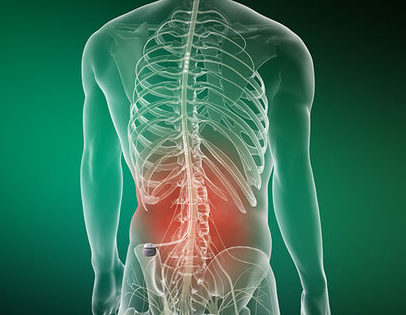 New research has found spinal cord stimulation therapy can reduce or stabilise the use of opioids in patients battling chronic pain. Researchers examined opioid usage data from more than 5,400 patients both prior to and after receiving a spinal cord stimulation system implant. Average daily opioid use declined or stabilised for patients receiving a successful spinal cord stimulation system compared to patient use of opioids prior to an implant.
New research has found spinal cord stimulation therapy can reduce or stabilise the use of opioids in patients battling chronic pain. Researchers examined opioid usage data from more than 5,400 patients both prior to and after receiving a spinal cord stimulation system implant. Average daily opioid use declined or stabilised for patients receiving a successful spinal cord stimulation system compared to patient use of opioids prior to an implant.
In addition, while opioid usage was not different for the two groups at time of implant, patients who underwent a successful spinal cord stimulation implantation had significantly lower opioid use one year later. Patients who had their spinal cord stimulation system removed saw their opioid use increase again over time.
For their analysis, the research team assessed private and Medicare insurance claims data from 5,476 patients who received a spinal cord stimulation system to treat chronic pain associated with a host of conditions (excluding pain related to cancer). The data were collected between January 2010 and December 2014.
The data confirmed that many patients are often prescribed increasing dosages of opioids prior to receiving a spinal cord stimulation system. The researchers also found:
- Spinal cord stimulation therapy is effective for patients at any level of opioid usage prior to implantation.
- Opioid use declined or stabilised in 70% of patients who received a spinal cord stimulation system.
- Among patients who had their spinal cord stimulation system explanted, opioid use was higher at one year compared to those who continued with the therapy.
The researchers further suggested patient outcomes could be improved if spinal cord stimulation systems were implanted earlier in recognition of the clinical practice to provide increasing dosages of opioids over time. These conclusions help build upon prior research, such as results of a large multicentre randomised controlled trial in patients with failed back surgery syndrome that showed trends in opioid reduction or cessation among spinal cord stimulation patients. In addition, new technologies released in the USA in 2015 and 2016 hold may improve outcomes further and may reduce common complications resulting in explant such as the undesired changes in paresthesia, issues with charging, pain at the implantable pulse generator site, and loss of pain relief.
“Given the epidemic of opioid addiction and abuse, these findings are important and confirm that spinal cord stimulation therapy can offer strong benefits for patients struggling with chronic pain,” says Sharan. “Based on these results, we concluded it may be possible to improve outcomes by offering our patients spinal cord stimulation earlier, before opioid dependence and addiction can occur.”
The study was presented t the 2017 North American Neuromodulation Society (NANS) annual meeting (Las Vegas, USA; 19-22 January 2017) by Ashwini Sharan, director of Functional and Epilepsy Surgery at Vickie and Jack Farber Institute for Neuroscience at Thomas Jefferson University (Philadelphia, USA) and president of NANS. The study was sponsored by Abbott.









